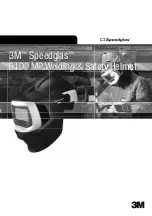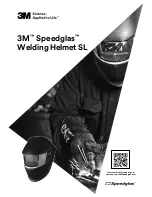
VII
VII
SAFETY INFORMATION
TWO-WHEELED Machines ARE SINGLE TRACK VEHICLES. THEIR SAFE USE AND OPERATION ARE DEPENDENT
UPON THE USE OF PROPER RIDING TECHNIQUES AS WELL AS THE EXPERTISE OF THE OPERATOR.
EVERY OPERATOR SHOULD KNOW THE FOLLOWING REQUIREMENTS BEFORE RIDING. HE OR SHE SHOULD.
1. OBTAIN THOROUGH INSTRUCTIONS FORM A COMPETENT SOURCE ON ALL ASPECTS OF MACHINE
OPERATION.
2. OBSERVE THE WARNINGS AND MAINTENANCE REQUIREMENTS IN THE OWNER’S MANUAL.
3. OBTAIN QUALIFIED TRAINING IN SAFE AND PROPER RIDING TECHNIQUES.
4. OBTAIN PROFESSIONAL TECHNICAL SERVICE AS INDICATED BY THE OWNER’S MANUAL AND/OR WHEN
MADE NECESSARY BY MECHANICAL CONDITIONS.
SAFE RIDING
1. Always make pre-operation checks. Careful checks may help prevent an accident.
2. Many accidents involve inexperienced operators.
a. Know your skills and limits. Staying within your limits may help you to avoid an accident.
b. Only lend your machine to experienced operators.
3. Many machine accidents have been caused by machine operator errors. A typical error made by the operator is
veering wide on a turn due to EXCESSIVE SPEED or undercornering (insufficient lean angle for the speed). Never
travel faster than warranted by conditions.
4. Ride cautiously in unfamiliar areas. You may encounter hidden obstacles which could cause an accident.
5. The operator’s posture is important for proper control. The operator should keep both hands on the handlebars and
both feet on the operator footrests during operation to maintain control of the machine.
6. Never ride under the influence of alcohol or drugs.
SAFETY INFORMATION
TWO-WHEELED Machines ARE SINGLE TRACK VEHICLES. THEIR SAFE USE AND OPERATION ARE DEPENDENT
UPON THE USE OF PROPER RIDING TECHNIQUES AS WELL AS THE EXPERTISE OF THE OPERATOR.
EVERY OPERATOR SHOULD KNOW THE FOLLOWING REQUIREMENTS BEFORE RIDING. HE OR SHE SHOULD.
1. OBTAIN THOROUGH INSTRUCTIONS FORM A COMPETENT SOURCE ON ALL ASPECTS OF MACHINE
OPERATION.
2. OBSERVE THE WARNINGS AND MAINTENANCE REQUIREMENTS IN THE OWNER’S MANUAL.
3. OBTAIN QUALIFIED TRAINING IN SAFE AND PROPER RIDING TECHNIQUES.
4. OBTAIN PROFESSIONAL TECHNICAL SERVICE AS INDICATED BY THE OWNER’S MANUAL AND/OR WHEN
MADE NECESSARY BY MECHANICAL CONDITIONS.
SAFE RIDING
1. Always make pre-operation checks. Careful checks may help prevent an accident.
2. Many accidents involve inexperienced operators.
a. Know your skills and limits. Staying within your limits may help you to avoid an accident.
b. Only lend your machine to experienced operators.
3. Many machine accidents have been caused by machine operator errors. A typical error made by the operator is
veering wide on a turn due to EXCESSIVE SPEED or undercornering (insufficient lean angle for the speed). Never
travel faster than warranted by conditions.
4. Ride cautiously in unfamiliar areas. You may encounter hidden obstacles which could cause an accident.
5. The operator’s posture is important for proper control. The operator should keep both hands on the handlebars and
both feet on the operator footrests during operation to maintain control of the machine.
6. Never ride under the influence of alcohol or drugs.








































